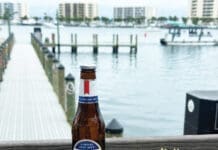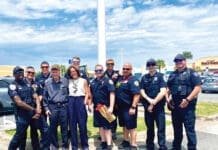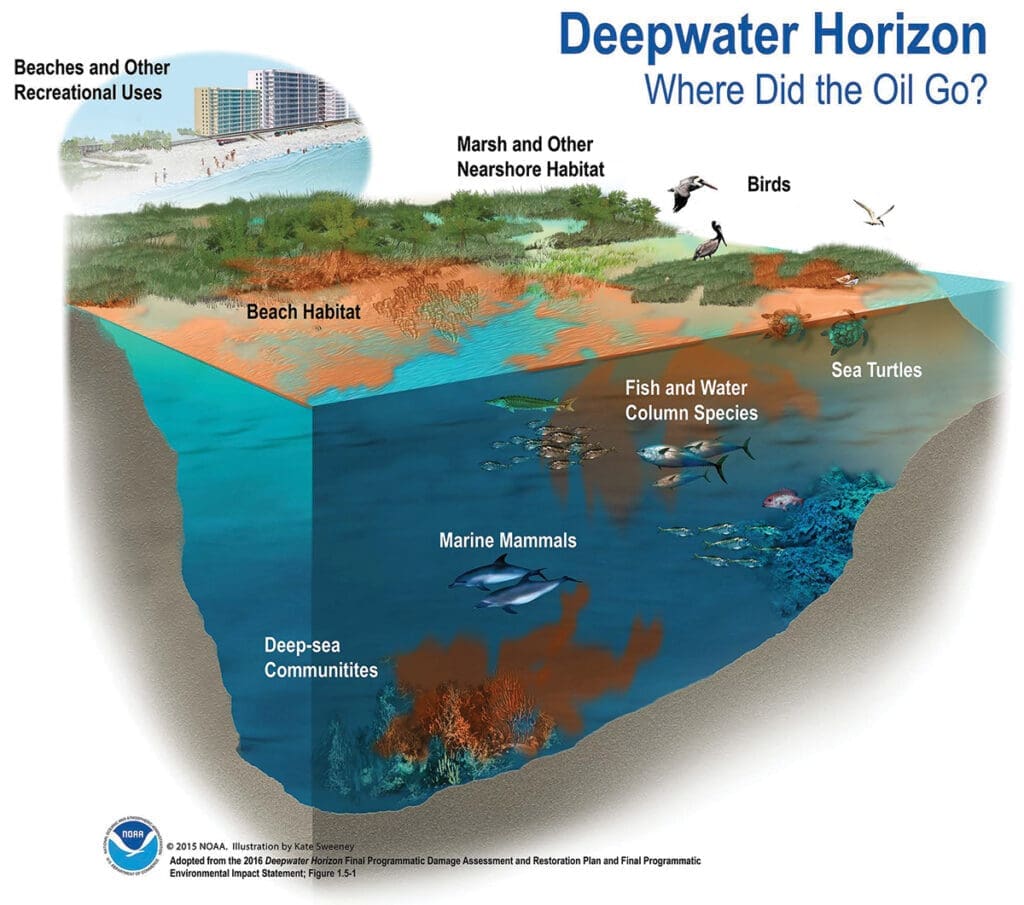Deep Sea Cruise Season, By the Numbers
By NOAA Fisheries
The data samples, imagery and sonar scans gathered by Deepwater Horizon restoration program scientific cruises will advance restoration in some of the Gulf’s most inaccessible yet crucial habitats.
The 2010 Deepwater Horizon oil spill damaged deep-sea habitats over a large area. These complex ecosystems include corals, fish, anemones, sponges and sea cucumbers – but limited knowledge about these habitats creates challenges for their restoration.
From April through October 2022, NOAA and collaborators embarked on eight scientific cruises in some of the Gulf of Mexico’s deeper waters in the vicinity of the oil spill. The data, samples, imagery, and sonar scans gathered during these cruises will advance restoration in some of the Gulf’s most inaccessible yet crucial habitats.
The cruises support a set of Mesophotic and Deep Benthic Communities projects approved by the Open Ocean Trustee Implementation Group. They’re part of the Deepwater Horizon restoration effort across the Gulf of Mexico.
Using remotely operated and autonomous underwater vehicles, the crews mapped thousands of square miles of seafloor. They collected deep sea coral samples for reproductive studies and created valuable reference data sets near the site of the Deepwater Horizon oil spill.
Despite occasionally challenging conditions – including one ship being temporarily disabled at sea after a lightning strike – the cruises were intensely productive. Here’s a snapshot of some of the work the projects completed in 2022.
Mapping, Ground-Truthing, and Predictive Habitat Modeling Cruise: 1
The Ferdinand R. Hassler spent 59 days at sea between April and June, mapping nearly 1,040 square miles of seafloor from a depth of 160-660 feet. The new maps have four times better seafloor resolution than the previous U.S. Geological Survey maps produced in 2001.
Preliminary data from this expedition is already being used to improve existing habitat suitability models for subsequent deep-sea remotely operated vehicle (ROV) dives.
Habitat Assessment and Evaluation Cruises: 3
The Pisces spent 28 days at sea, sending an AUV to depths of 160-490 feet, collecting images of habitats and gathering data and water samples for nutrient and environmental (eDNA) analysis. Environmental DNA can identify which target species are present in an area of interest.
The Nancy Foster spent 12 days at sea performing nine surveys at depths down to 6,600 feet – within 10 miles of the Macondo wellhead. The data gathered will help assess deep-sea coral habitat health and estimate recovery rates for impacted corals and organisms in seafloor sediments, compared to unimpacted sites.
The Point Sur spent most of September gathering samples of sediment from the seafloor, and profiled seafloor areas to verify previous mapping efforts. The chemical, environmental, geological, and biological information in these sediment samples will help scientists gain insights into climate and environmental change.
Coral Propagation Technique Development Cruises: 4
The Point Sur’s 11-day cruise in June used an ROV to survey the seafloor and collect coral samples for propagation, population genetics, and reproductive biology studies. The scientists used data loggers for long-term site monitoring. This information will help scientists better understand how deep-sea corals reproduce, and improve the ability to grow corals in the lab that can be transplanted in the future.
The Manta spent five days at sea in July conducting visual surveys of coral habitat, collecting octocoral samples for reproduction studies and propagation. Researchers also deployed and recovered data loggers to understand the environmental cues that trigger octocoral spawning.
The Manta’s return to sea for five days in September featured a full moon, during which scientists collected corals that were ready to spawn. They also documented timing for the spawning of coral species like Swiftia exserta. Scientists also took video surveys of mesophotic (low light) communities.
The Point Sur had its moment in the moonlight as well. It spent 12 days at sea in October for another coral spawning event and collection of corals for reproductive and genetics studies to support their restoration.
For more information, visit NOAA Fisheries at www.fisheries.noaa.gov/.
—————–
Deepwater Horizon – Where Did the Oil Go?
The largest oil spill in U.S. history affected coastal beaches and marshes all the way to the deepest parts of the Gulf of Mexico, as well as the fish and wildlife that call those habitats home. The 2010 Deepwater Horizon spill affected a broad array of linked resources and ecological services over a large area. The impact can best be described as an injury to the entire ecosystem of the northern Gulf of Mexico. It affected habitat at the coast, off the shore and at the bottom of the Gulf. It affected species like fish, marine mammals, sea turtles, birds and deep-sea coral. It also affected our ability to go fishing, boating and other recreation.
This infographic was adopted from the 2016 Deepwater Horizon Final Programmatic Damage Assessment and Restoration Plan.
Reprinted with permission from NOAA Fisheries. Learn more about the historic Gulf Spill Restoration effort at www.gulfspillrestoration.noaa.gov.






























































